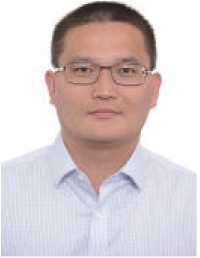Jiehua Li **
1 Chair of Casting Research, Montanuniversitat Leoben, Leoben, 8700, Austria;
EXTENDED ABSTRACT: Al-Si based alloys (i.e. A356, A357 or ZL101A, ZL114A) have been widely used in the aerospace and automotive industries due to their high performance and low costs. Modifying the eutectic Si from flake-like to fibrous is of great necessity to improve the perfonnance of Al-Si alloys. Three well-known modification mechanisms (the impurity-induced twinning (IIT) mechanism and the twin plane re-entrant edge (TPRE) mechanism as well as the poisoning of the TPRE mechanism) are generally accepted to be valid under certain conditions. However, IIT, TPRE or poisoning of TPRE mechanism cannot be used to interpret all observations accompanying modification, indicating that other factors may be also valid. Solute entrainment was therefore proposed [1]. In this talk, I will report atomic density functional theory (DFT) simulation and experimental transmission electron microscopy (TEM, including high angle annular dark field imaging (HAADF) and electron energy loss spectroscopy (EELS) in scanning transmission electron microscopy (STEM)) together with atom probe tomography (APT) on the distribution of modifying elements (Sr, Na and Eu) within eutectic Si. Both atomic DFT simulation and experimental TEM APT observation reveals that modifying elements have three difierent roles: (i) the adsorption at the intersection of Si facets, inducing IIT growth mechanism, (ii) the adsorption at the twin plane reentrant edge, inducing TPRE growth mechanism, and (iii) the adsorption ahead of the growing Si twins, inducing a solute entrainment within eutectic Si. This talk not only demonstrates a direct experimental support to the well-accepted poisoning of the TPRE and IIT growth mechanisms, but also provides a full picture about the behavior of modifying solutes, including the solute entrainment within eutectic Si.
Keywords: Al-Si alloy; Modifying solutes; Eutectic Si; DFT simulation; TEM; APT
REFERENCES
[1] J.H. Li, M. Albu, F. Hofer and P. Schumacher, Acta Mater. 83, (2015) 187-202.

Jiehua Li has completed his PhD in January 2010 from Northwestern Polytechnic University, China. After his Ph.D, he moved and worked in Chair of Casting Research, Montanuniversitat Leoben, Austria. He has published 39 first-authored and 34 co-authored, peer-reviewed papers in prestigious journals, including Acta Mater. (12). He holds two Chinese patents and one USA patent. He was the winner of the international prestigious HZG Magnesium Research Award in 2017 and Humboldt Research Fellowship for Experienced Researchers in 2018. He was the chairman of S2P2021 (16th International Conference on Semi Solid Processing of Alloys and Composites (S2P)) and the member of the international scientific committee of S2P.